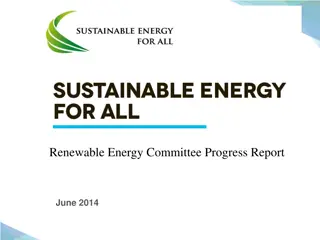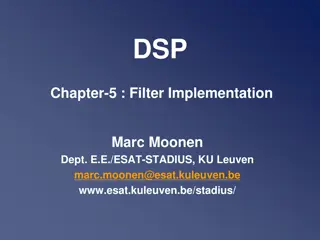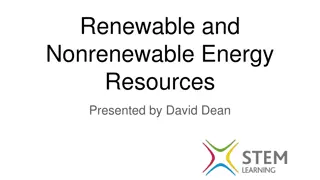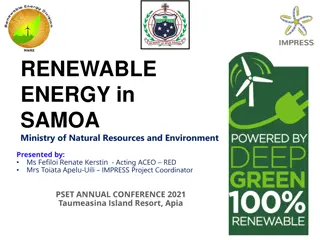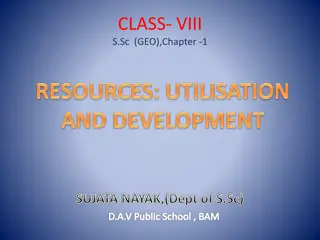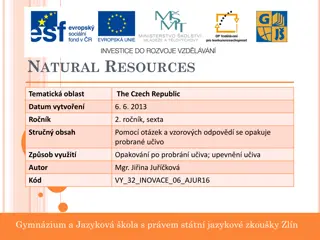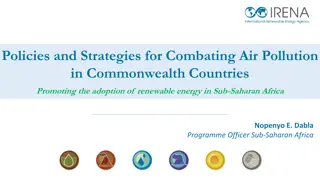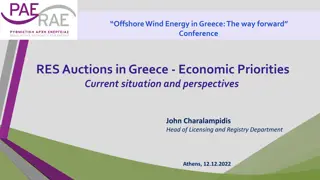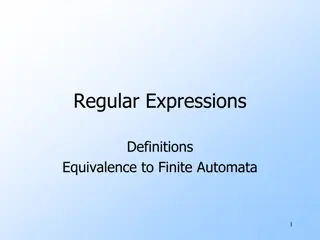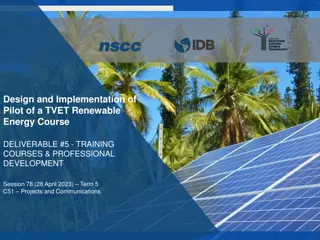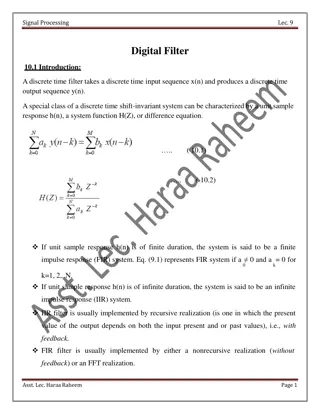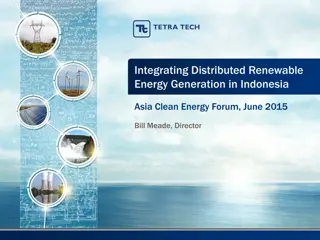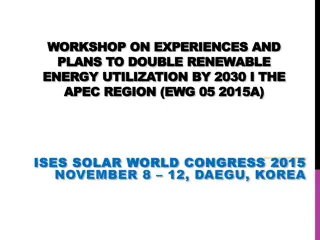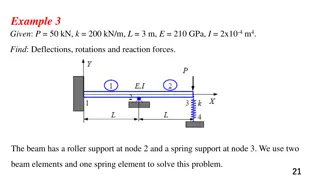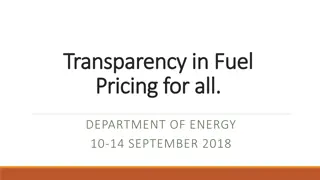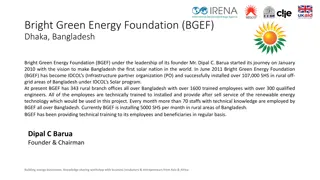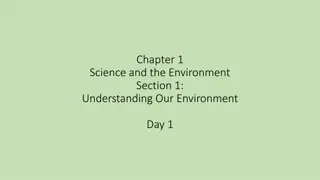Understanding Finite and Renewable Resources in Environmental Science
Explore the concepts of finite and renewable resources, the implications of their usage, examples of natural products replaced by synthetic alternatives, and the importance of sustainability. Delve into the significance of identifying atmospheric pollutants, evaluating data, and fostering responsible resource management practices.
Download Presentation

Please find below an Image/Link to download the presentation.
The content on the website is provided AS IS for your information and personal use only. It may not be sold, licensed, or shared on other websites without obtaining consent from the author. Download presentation by click this link. If you encounter any issues during the download, it is possible that the publisher has removed the file from their server.
E N D
Presentation Transcript
Finite and renewable resources Grade Objective Outcomes To be able to identify examples of natural products that are supplemented or replaced by agricultural and synthetic products To be to interpret information about finite and renewable resources To be able to use orders of magnitude to evaluate the significance of data 1-3 To be able to interpret information about finite and renewable resources. 4-6 7-9 Starter: 1. Define the terms finite and renewable 2. Can you give three examples of a renewable resource we can use to generate electricity? 3. Identify four atmospheric pollutants that are released by car engines and the conditions they were produced under.
Think > Pair > Share: What is the definition for the terms finite and renewable Finite resources are those that are being used up at a faster rate than they can be replaced. So, if we carry on using these resources at current rates then finite resources will run out. Renewable resources are those that can be replaced at the same rate they are being used up.
Task: Watch the video and answer the following questions: https://www.youtube.com/watch?v=1UQnUQR0tTo 1. Humans use many of the Earth s resources, can you give four examples of how these resources are used? 2. Can you give two examples by which agricultural has helped us to use the Earth s natural resources more sustainable? 3. Define the term synthetic 4. Give two examples of a finite resource. 5. Give one example of a renewable resource. 6. What does the term sustainable mean?
Self-assessment: 1. Humans use the Earth s resources for warmth, shelter, food and transport. 2. Cotton, which is produced by a plant, is grown in sufficient quantities to meet the demands of the world. In addition, trees are grown for timber and fuel. 3. Synthetic means that it is a man-made material. 4. Two examples of finite resources are fossil fuels and metals. 5. One example of a renewable resource is wood. 6. Sustainability means that we meeting the needs of our generation without compromising the ability to meet the needs of future generations.
Finite resources The chemical industry uses natural resources as raw materials to make new products: Crude oil is used to make polymers and petrochemicals Crude oil is also used to produce fuels such as petrol, diesel and kerosene. Metals ores are needed to extract metal Limestone is used to make cement How quickly these finite resources may run out depends on several uncertain factors. In pairs, discuss what these factors might be.
We are unsure of the exact quantities of certain finite resources left on Earth. Are there areas on Earth, with a fresh supply of finite resources, that we are yet to discover? Uncertainties surrounding estimates of how long finite resources will last. The rate at which we are currently using finite resources may change in the future, this is hard to predict The effect of recycling finite resources, in order to ensure that they last longer.
Math Skill Orders of magnitude A simple estimate is an order of magnitude estimate, this is an estimate the nearest 10. Worked example - Comparing orders or magnitude Say the size of a molecule is of the order 1 x 10-9 and the size of a nanoparticle is 1 x 10-8, estimate how the size of the nanoparticle compares to the molecule, to the nearest order of magnitude. Solution Step 1: 1x 10-7 Step 2: Interpret answer to the calculation The nanoparticle is one order of magnitude (101) larger than the molecule = 10 1 x 10-9
Quick Check 1. In 2012, it was estimated that 9.5 x 109 metric tonnes of carbon were burned worldwide that year. It is also estimated that 1.5 x 1016 metric tonnes of fossil carbon is left on Earth. Assuming the rate in 2012 continues, calculate an order of magnitude estimate of how long fossil carbon will last.
Renewable resources Wherever possible, industries are moving towards renewable resources to conserve finite resources and improve sustainability. Crude oil is used to make a range of polymers using ethene. An alternative way of producing these polymers is to make ethene from ethanol, ethanol is made by fermenting sugar cane therefore this is a renewable resource. Another example is the use of woodchips instead of fossil fuels to fuel power stations.
Think, Pair, Share! In pairs you are going to be given a bit of information about alternative solutions to fossil fuels Firstly, just THINK about what you are reading is it a viable alternative? What are the advantages and disadvantages of this fuel? Now PAIR up, discuss with you partner what the advantages and disadvantages are and complete this section of your table SHARE your ideas with the class and learn about other alternative fuels too! Move around the room to complete the rest of your table by talking to your classmates.
Self-assessment: It is renewable Releases lots of energy Non-polluting It is very hard to store Hydrogen can very dangerous if mixed with air, it can be explosive Production of biofuels requires fossil fuels High demand has led to deforestation Most imported Sulphur-free Renewable resource Produced less carbon monoxide Renewable Sulphur-free Deforestation Habitat loss
Exam-style question: 1. Match the following type of energy resource to the correct way in which it generates electricity: Energy Resource Geothermal Hydroelectric Is predictable Nuclear Produces dangerous waste Use energy from the wind 2. What are fuels? Statement about resource Uses energy from falling water Uses energy from inside the Earth (3 marks) (1 mark) 3. Why is it better to use more renewable energy resources than non-renewable, finite energy resources? (2 marks)
Self-assessment: 1. Match the following type of energy resource to the correct way in which it generates electricity: Energy Resource Geothermal Hydroelectric Is predictable Nuclear Produces dangerous waste Use energy from the wind 2. Fuels are energy sources Statement about resource Uses energy from falling water Uses energy from inside the Earth (3) (1) 3. Non-renewable energy resources produce pollution//toxic waste. Save limited supplies of coal / oil / gas for future generations. Ref to sustainability. (2)
Plenary ~ Complete one of the following sentences in your book: Today I have learnt that One thing I must remember from today s lesson is I still don t understand . Before this lesson I already knew how to
Resources Resources
agricultural has helped us to use the Earths agricultural has helped us to use the Earth s Humans use many of the Earth s resources, Humans use many of the Earth s resources, Give one example of a renewable resource. Give one example of a renewable resource. can you give four examples of how these can you give four examples of how these What does the term sustainable mean? What does the term sustainable mean? Give two examples of a finite resource. Give two examples of a finite resource. natural resources more sustainable? Can you give two examples by which natural resources more sustainable? Can you give two examples by which Define the term synthetic Define the term synthetic resources are used? resources are used? 2. 3. 4. 5. 6. 2. 3. 4. 5. 6. 1. 1.
Biodiesel Biodiesel is mainly made with vegetable oils. Usually it is mixed with diesel before it is used in a vehicle s engine. Biodiesel is sulfur-free, when mixed with normal fuels they reduce the level of sulfur dioxide pollution. Biodiesel is primarily made from plants, therefore it is a renewable resource. The production of biodiesel requires energy from the burning of fossil fuels fossil fuels. In order to make way for biofuel crops, huge areas of rainforest are being cleared which is leading to habitat destruction. There are few UK producers of biofuels, and only small quantities of fuel are made. Biofuels therefore need to be imported, mainly from Brazil and South-East Asia.
Ethanol The production of ethanol is commonplace in countries which grow sugarcane, for example Brazil. Ethanol is produced by a process called fermentation. The ethanol is then mixed with petrol, when burnt this combination produces less carbon monoxide than petrol alone. Ethanol is produced from plants, it is therefore a renewable resource as it can be regrown. Ethanol is also sulfur-free so it s use reduces the level of harmful sulfur pollutants in the atmosphere. Huge areas on rainforest, particularly in the Amazonian rainforest, are being cleared to make way for sugarcane to be grown. This is leading to the destruction of vital habitats, reducing biodiversity and also disrupting the lives of tribes living in these areas.
Hydrogen Hydrogen, when burnt with pure oxygen, is a zero-emission fuel which can release huge amounts of energy. It is also ideal as it renewable. The only downside is that it cannot be used in normal engines. One way the energy from this reaction is currently being harnessed is in hydrogen fuel cells, which generate electricity to power electric vehicles. Hydrogen can be very explosive. Hydrogen is difficult to store, it needs to be kept cool and compressed to be stored as a gas Only a small amount of hydrogen is needed to release a huge amount of energy Hydrogen reacts with oxygen when burnt to release water vapour only no harmful gases





